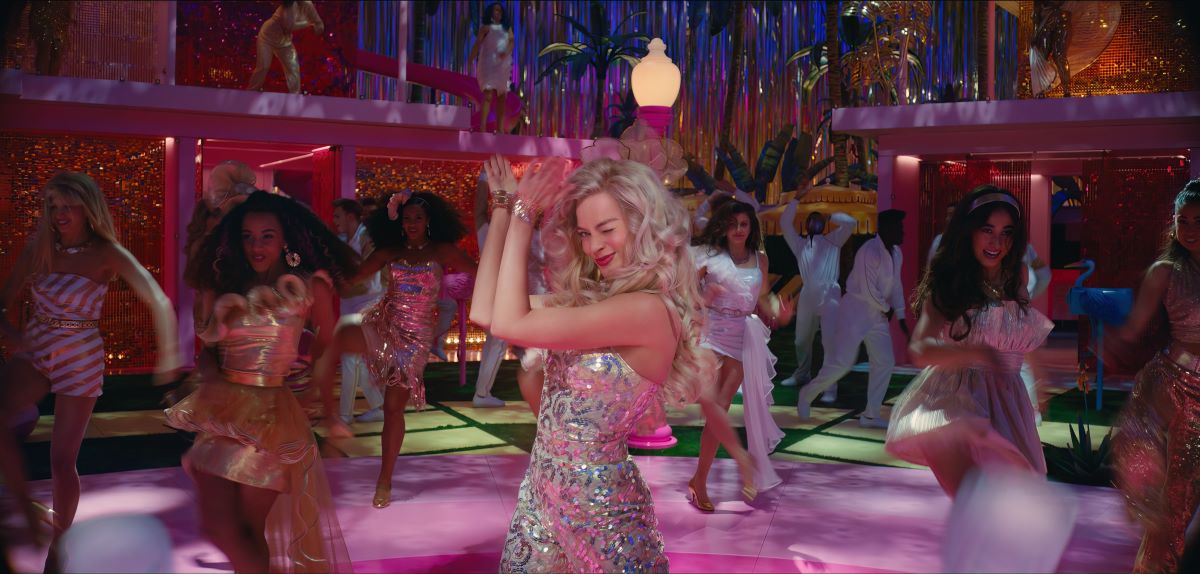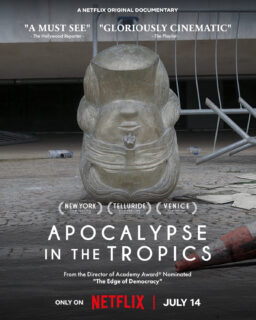Movies are a pure and majestic art form, but, often, they’re also the products of a business. Some films are more obvious about this than others, yet it’s always in the bottom line. There are plenty of examples of the broadly commercial instincts of a Hollywood studio—merchandising, for instance, with films earning spin-off video games and endless toy lines. Some movies, however, take this a step further, leading to a perplexing Matryoshka doll of a product within a product. It makes sense, in a way, that in a cultural landscape where brands have replaced ideas, studios would feel more comfortable relying on corporate identities for their projects rather than risking it all on untested original narratives.
Whether they’re successful, however, is another matter entirely. These product-focused films and corporate biopics come at the same problem of wooing audiences in different ways. The best films, like Greta Gerwig’s “Barbie,” manage to either interrogate their brand—tearing it down or building it up as necessary—or somehow manage the trick of replacing the product in the audience’s mind with some core emotion they can tap into instead.
There are a few key strategies in films like this. As we’ve seen in some of the corporate biopics released in 2023, the first is to honor the product above all else. Ben Affleck’s “Air,” the story of Nike’s wooing of Michael Jordan as he prepares to enter the NBA, spends absolutely zero time trying to convince you it’s about anything other than the Air Jordan. Instead, it banks on the audience’s feelings of affection for Jordan and, by extension, the Nike brand. It treats the basketball player as a mythical figure whose influence will stretch down through the generations—because it must, in order to justify the film’s existence. If we see Michael Jordan as anything less than a god walking among mere men, “Air” doesn’t work.
“BlackBerry,” directed by Matthew Johnson, makes tragic heroes of the cell phone’s founders, taking fairly straightforward business dealings and creating high Shakespearean drama and an epic fall from grace. Whatever the eventual fate of the BlackBerry, there was a time in the early 2000s when it was the phone to have. The film honors its inventor’s sense of innovation, exploring the monumental impact that its technology and product design had on the future of smartphones, a now ubiquitous component of everyday life. The BlackBerry thus becomes not one of the 21st century’s greatest telecommunications failures but the creative output of a modern-day Icarus.

Eva Longoria’s “Flamin’ Hot,” by contrast, details the development of something as seemingly inconsequential as the Flamin’ Hot Cheeto, a spicy snack first released in the early ‘90s that forever changed the game of munchies. But you can’t just make a movie about spicy seasoning—that would be ridiculous. “Flamin’ Hot” frames the introduction of a product at Frito-Lay as the classic immigrant story, in which a humble janitor taps into a market that the ivory tower executives had long been overlooking.
These films—and many others—play on the powerful sense of nostalgia from audiences in a way that has been popular in Hollywood for years. What’s different now is that instead of attaching this nostalgia to video game characters or ‘90s cartoons, or comic book villains, we’re making corporate brands our cinematic heroes. Cynical as this may be, these films are capable of succeeding with audiences insofar as they tap into what made these products feel so comforting and familiar—the superhuman persona of Michael Jordan (and, by extension, his shoes), the satisfying click of the BlackBerry thumbwheel.
While this approach actively centers the product within the narrative, other films attempt the opposite: doing everything in their power to make audiences forget what they’re selling. Mel Stuart‘s 1971 film “Willy Wonka and the Chocolate Factory” is a fascinating example. In many ways, this is the prototypical movie-as-product. The entire project was only greenlit when Quaker Oats got into the candy-manufacturing game, and executives sought a way to promote their new chocolate bar. In lesser hands, perhaps, “Willy Wonka and the Chocolate Factory” would have been little more than a feature-length commercial for a subpar candy bar that had to be recalled from stores almost immediately after they were released. But director Mel Stuart’s film isn’t about chocolate—or at least, it isn’t only about chocolate. It’s about the magic and endless creative possibilities of childhood imagination, the factory seeming like it was conjured up in a sugar-induced fever dream.
“Barbie” makes no secret that it’s about a product. Still, it attempts the same strategy as “Willy Wonka”: It’s about Barbie, sure, but it’s also about feminism and the patriarchy. It intentionally engages in the discourse surrounding the classic Barbie doll. Although it opens as an extended commercial for Barbie, it explores the conversation—and ire—that has followed the doll for decades, viewing it as an extension of the impossible standards women face. The Barbies of Barbieland are simply doing their best to offer diverse role models for girls, teaching them that they can grow up to be anything. But at the end of the day, Barbie’s just a doll, and it’s impossible for her to be all things to all people, single-handedly repairing the gender inequalities of the real world.

Through that lens, “Barbie” is a feminist story about women continually being punished for imperfection—even a doll created to represent the pinnacle of beauty and female accomplishment isn’t immune from criticism. But turning the critiques about the value and damage the Barbie toy line hath wrought into a conversation about how the world treats women also absolves Mattel of any wrongdoing. By allowing themselves to be depicted in the film—with an all-male corporate leadership structure, no less—Mattel gets to be seen as in on the joke. Defending Margot Robbie’s Barbie becomes both an act of feminism and, more cynically, a way to carry water for the company that profits off her. Criticizing Barbie is supporting the patriarchy, Mattel says. But this is perhaps an uncharitable interpretation of the film, and it ultimately succeeds with audiences by giving them what feels like an organic way to root for a doll that has long been the subject of withering disapproval. This offers permission to forgive Barbies and, by extension, all women for failing to meet the impossibly high standards the world imposes upon them.
As much as we’d all like Hollywood to embrace more projects not based on pre-existing IP, it seems like corporate-branding-as-protagonist is here to stay. But that doesn’t necessarily mean that all of these films are doomed to creative failure. To succeed, filmmakers must be prepared to see their product for what it is. “Air” is a bit of a disappointment because its only function is to celebrate the je ne sais quoi of Michael Jordan and the pluckiness of Nike’s basketball division. “BlackBerry” fares better because of its willingness to cast its tech genius protagonist in an unflattering light—Mike Lazaridis starts the film determined that every piece of technology he designs is going to be lovingly built with quality in mind, and he ends it surrounded by boxes of broken cellphones about to be shipped out to consumers, resulting in an immediate recall and the collapse of the BlackBerry brand.
The lesson here is that if you have to make the narrative actually about the product, don’t be precious with it. Use a product as a jumping off point for a more engaging story that has nothing to do with, for example, Barbie dolls.











